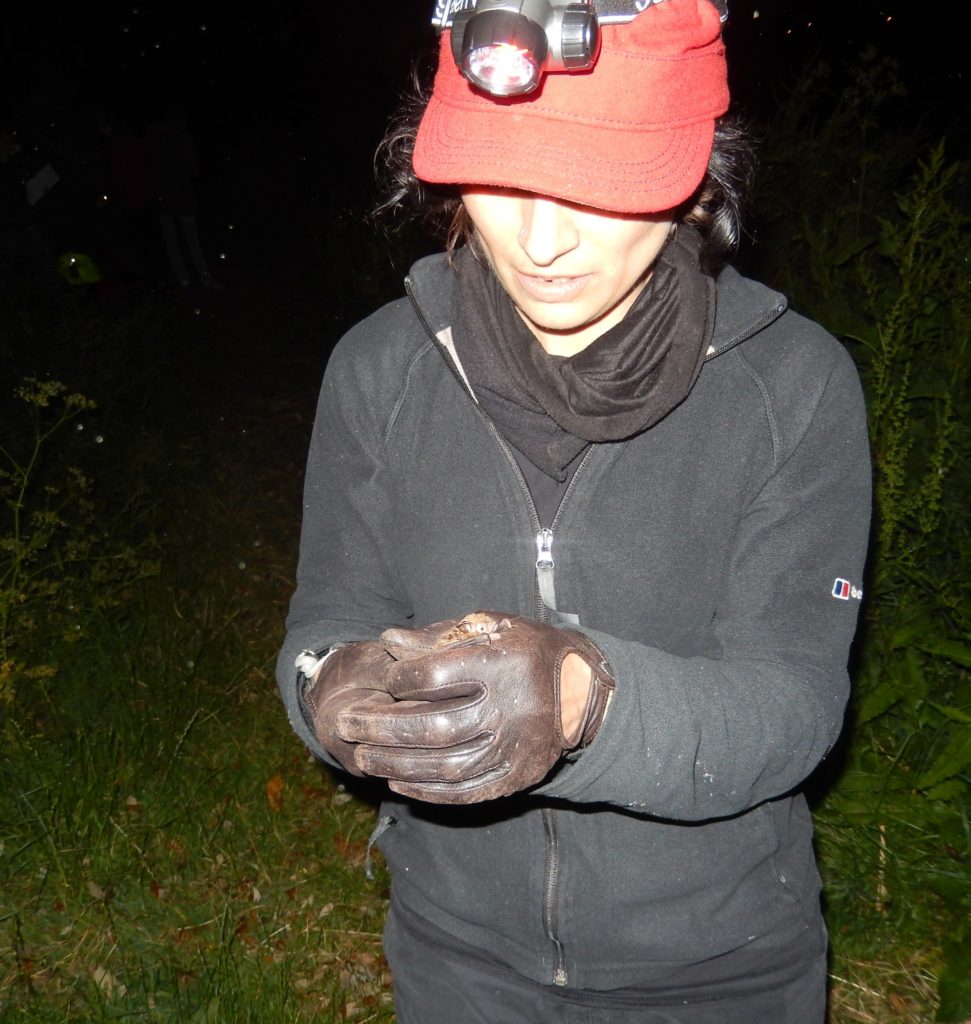
The screech and clatter of the Piccadilly line train filled my ears as we rattled, mercifully quickly, deep below the city centre in London’s fastest and loudest tube line, on the way to Manor House.
I emerged into the grey urban jungle of the Seven Sisters Road, the cars whizzing past the fast food shops as if to escape as soon as they might. Hooded youths hung about the estate gardens in small disconsolate groups. Women scuttled past, heads down, on the grimy pavements. I consulted my map, strode eastwards as purposefully as I could, and crossed into Woodberry Grove.

The gleaming new towers of “Woodberry Down” rose on either hand, the street lined with clean young trees and gleaming black cars. Even the pavements were newly laid in handsome yellow-brown flagstone. It was evidently a shinier, more prosperous Manor that the developers had had in mind.
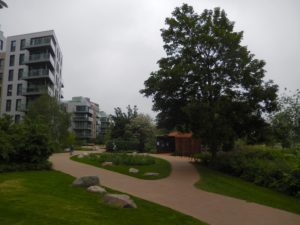
Around the corner lay the entrance to London Wildlife Trust’s newest reserve, Woodberry Wetlands. It too was carefully landscaped, and money (from Berkeley, Thames Water and the National Lottery) had evidently been lavished on the gateway itself, a cunningly strong rust-coloured hut of iron, the reserve’s name laser-cut right through the metal walls on both sides. The building straddled the New River, a natural moat; and the gatehouse had its own portcullis, in the form of robust iron gates, locked at night.
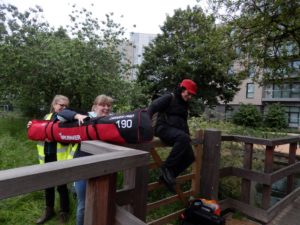
Huma (of Vole Patrol fame) and two other members of the London Bat Group arrived by car, carrying two enormous Harp traps in big red ski bags. I helped them over the footpath gates, locked to keep people away from bird nesting areas in the breeding season, and they walked around the reserve to a good place under the trees to set up their traps. They are doing some trapping as part of the National Nathusius Project, to learn about that species’ ecology and distribution in Britain.
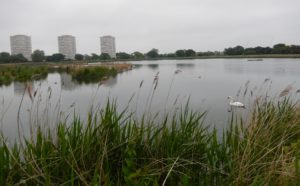
I walked along the broad new boardwalk to admire the reserve, a ring of reedbed and bushes around Thames Water’s East Reservoir. A Mute Swan dabbled peacefully; a few Mallard and Coot prepared for nightfall. I counted 66 Swifts whirling about the three grey towers across the water.
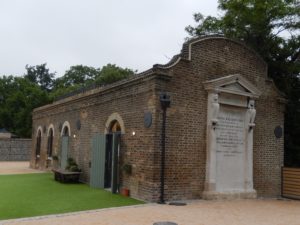
In an old Water Board building, elegantly converted to a cafe/meeting room, were waiting soft drinks and an excited crowd of the lucky few who’d managed to get tickets for the bat walk.
Huma ran in, a little late, but evidently excited by the result of putting up the traps. She quickly told us a little of the myth and truth about bats – they never get in your hair, they don’t really drink blood (well, vampires do exist, but they’re tiny, and they lap up a few drops of the blood of peccaries (wild pigs), unless humans cut down their forests, remove the peccaries, and then insist on lying with feet poking out of mosquito nets).
She introduced our local bats, too, painting colourful portraits of their respective characters.
- The largest, the Noctule, is “military”, flying high, fast and straight, echolocating loudly on each downbeat of its broad wings, with sounds heard in a bat detector set to around 20 kiloHertz as “chip shop chip shop”, slow and regular. The Serotine is “funky” by contrast, with shaggy fur and uneven calls; the middling Leisler’s, a relative of the Noctule, is halfway between the two.
- The small bats, the Pipistrelles, call at frequencies depending on their species: the Common “Pip” at 45 kHz, the Soprano Pip at 55 kHz, and Nathusius’ Pip (a migrant from Europe that Huma hopes may be here) at 39 kHz. All of them have a distinctive, low, jinking flight as they pursue their agile prey; and all, too, accelerate their echolocating calls into a feeding buzz or trill as they close in on their prey, getting more and more accurate positional information exactly when it is most needed.
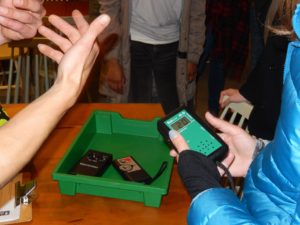
We picked up bat boxes, little miracles of electronics with a sensitive ultrasound microphone, speaker, and illuminated setting dial. They work by heterodyning the signal: that is, you guess or choose what frequency you want to listen out at, say 20 kHz (too high for nearly everybody’s hearing), and the device subtracts that from the signal received from the bat, if one is calling. The difference, if you have guessed close to reality, is a low frequency, say 1 kHz, which you can hear. If the bat is calling in bursts (which radar engineers call chirps), you hear those as patterns of clicks.
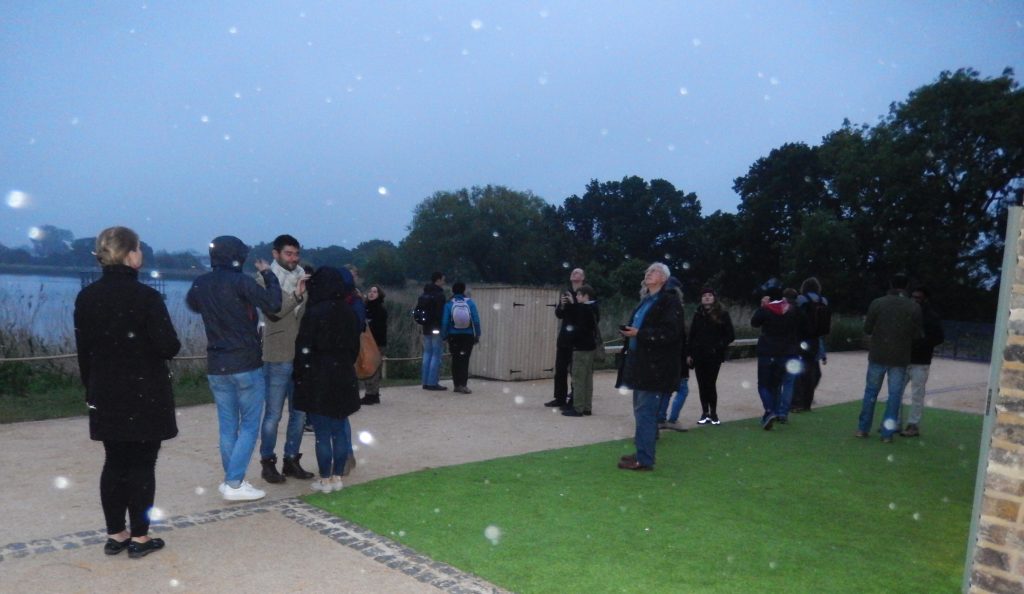
We went outside and fiddled with the controls. Clouds of gnats, and some nibbling to our ears and cheeks, as well as the whizzing Swifts, proved there was abundant insect food on the wing for any bats that might deign to turn up. Nothing.
Suddenly the air was filled unmistakably with the loud, distant, slow handclaps of a Noctule bat. The Germans fittingly call it the Grosse Abend-segler, the Great Evening-Sailor, as it strides boldly across the dusk sky. We saw no bat, however, just a few Swifts. Presumably the Noctule was far away, its calls detected by our sensitive electronics. We scanned the sky in hope.
And then there was one, plain to the naked eye. And another, and another, and yet more. Five Noctules at least whirled above our heads, uttering loud claps in chorus. With binoculars they looked exactly as you’d think, large batwinged shapes black against the still-glowing sky. Since I was on duty as a helper, I passed the binoculars around; and everyone who looked managed to see what we had come for, bats wheeling joyfully, plentifully, close by, in a London summer sky.
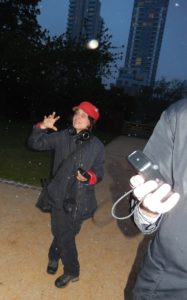
Huma led us on. Between the New River and the reedbed, with bushes and small trees all around, Pipistrelles darted and swerved, buzzed and clicked. They were harder to get in binoculars than their larger cousins, but it was possible. Heterodyned clicks and claps played a chorus all around. Excited fingers stabbed the sky. A Little Egret flapped slowly overhead, on its way to its night roost. The urban jungle felt very far away.
We were called forward in little groups to a gate to see the trapping. Huma came up and showed us a Daubenton’s Bat, her hands gloved against small sharp claws and insectivores’ teeth. The species is a specialist in hunting low over still water: it can scoop up insects from the water surface with a cunningly-designed flap, and if it should fall in, it can swim and take off again safely. The London Bat Group was carefully weighing and measuring the little mammals, and then releasing them. They were using a lure designed to attract Nathusius’ Pipistrelle: it also attracts Daubenton’s, hence the catches. But they did catch a female Nathusius’: Huma was delighted.
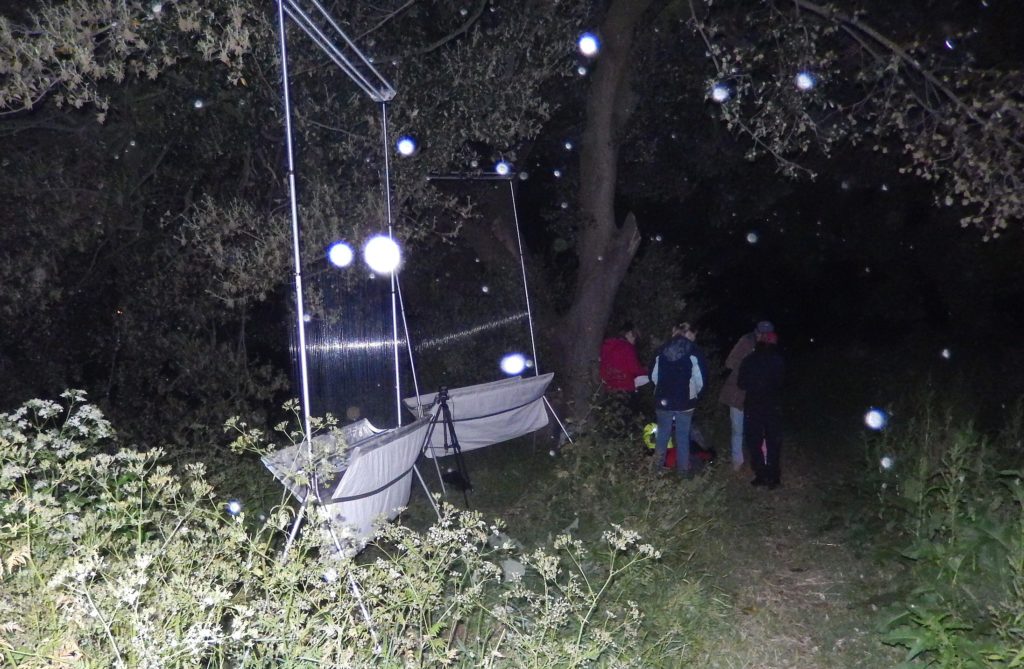
Let’s end with a closeup of the main photo. It’s not every day you see a Daubenton’s Bat face to face, let alone in a capital city.
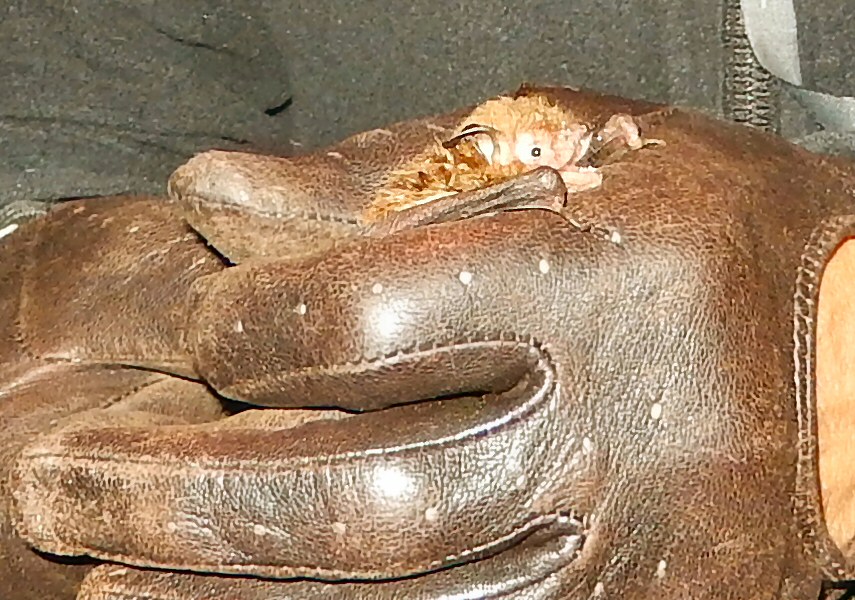
Twitter users can follow the bat study at #LondonBatGroup,
#WildLondon, and #Mostlybats.
